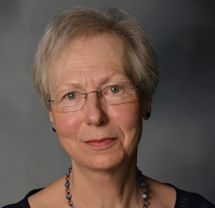Be(a)ware of (round) brackets (especially ‘Dutch’ ones)!
Joy Burrough-Boenisch, the Netherlands
Punctuation marks aren’t always used with the same frequency or in the same way in different languages. Take round brackets (in UK English, simply ‘brackets’): in Dutch- authored texts they’re often used in contexts and registers in which in English they would be used sparingly, if at all. Although some authorities on punctuation in English say that removing brackets enclosing a word or phrase from a sentence will leave a sentence that still makes sense, if you do this to a Dutch-authored sentence, you usually end up with a grammatically correct sentence that does not mean what the author intended.
Simply removing embedded brackets (brackets enclosing part of a word, as in the title of SENSE Conference2020: ‘(Re)Vision’) certainly isn’t advisable either – yet, strangely, there’s a lack of authoritative advice about using such brackets and about their purpose(s) in English. Small wonder that interpreting and using brackets vexes most language professionals translating Dutch or working with Dutch English. Drawing on my extensive collection of regular and quirky examples, I will therefore explain, compare and contrast ways that brackets are used by Dutch authors and by English native speakers uncontaminated by Dutch usage. My aim is to make language professionals more confident about bracket usage in English.
Although the presentation is intended primarily for language professionals whose exposure to ‘Dutch’ brackets has affected their interpretation and use of brackets in English, it will be an eye opener to anyone unaware of what can happen when a punctuation mark’s conventions and practices are transferred from one language to another.
Click here to register for the online conference
About the presenter

Joy Burrough-Boenisch (MITI) is a founder member and past chair of SENSE with a long career as a freelance authors’ editor and translator for Dutch academics and scientists. She has taught scientific English to graduate students and has presented webinars. She has given workshops for language professionals on editing non-native English in various European countries and for the European Commission. Her conference presentations include two in 2018 as an invited speaker at ATA’s New Orleans conference. Originally a geographer, she learnt to edit in Borneo and Australia before moving to the Netherlands, where her interest in second language interference and non-native English resulted in a PhD thesis on Dutch scientific English. As well as being the author of Righting English that’s gone Dutch (3rd ed 2013), she has various scholarly and professional publications on editing and non-native English to her name.

